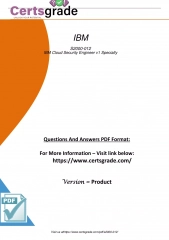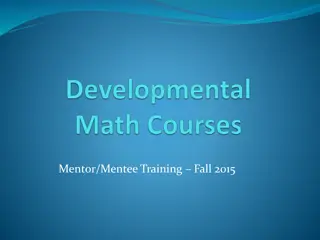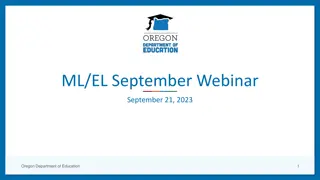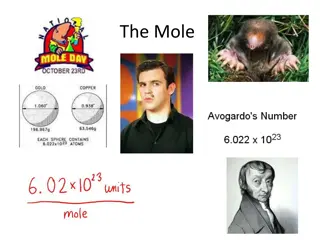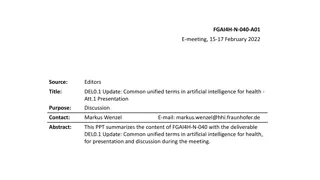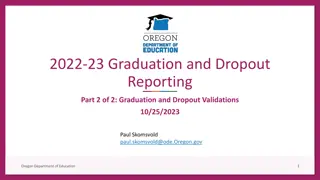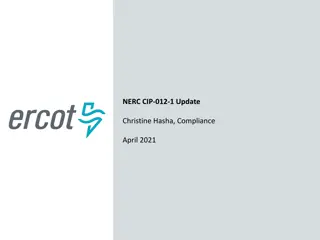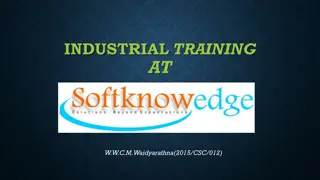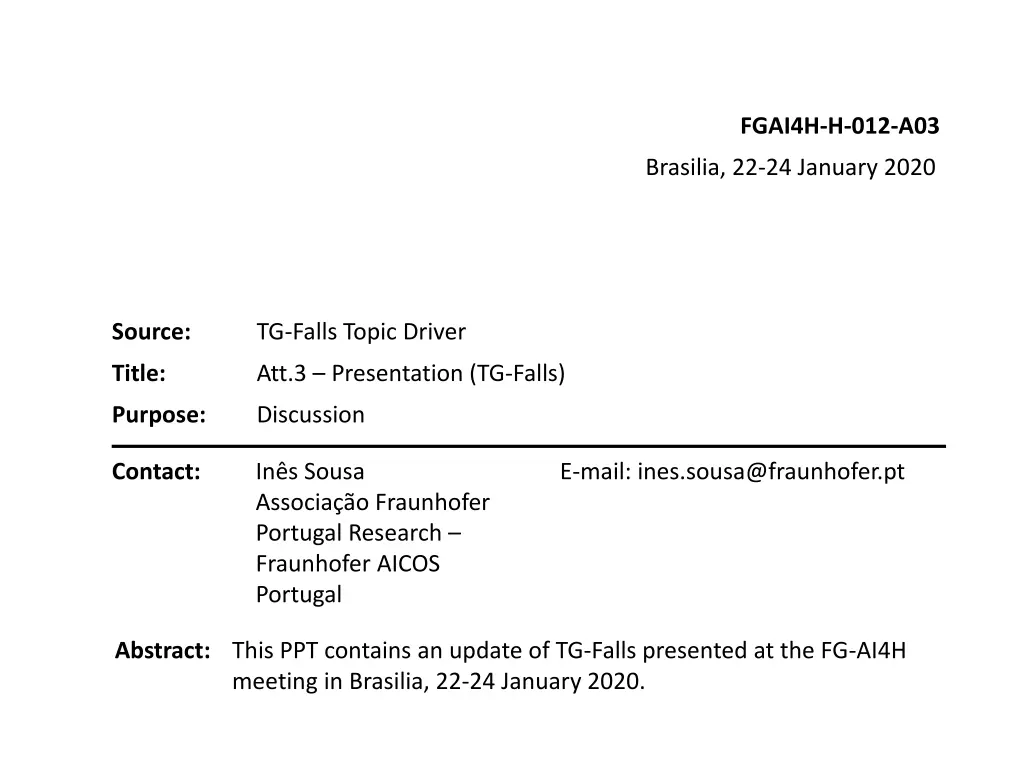
AI Applications in Multifactorial Fall Risk Assessment
Explore how Artificial Intelligence (AI) can revolutionize multifactorial fall risk assessment among the elderly population. Learn about the importance of standardized assessment models and the potential impact of AI-based tools in clinical practice towards preventing falls and improving overall health outcomes.
Download Presentation

Please find below an Image/Link to download the presentation.
The content on the website is provided AS IS for your information and personal use only. It may not be sold, licensed, or shared on other websites without obtaining consent from the author. If you encounter any issues during the download, it is possible that the publisher has removed the file from their server.
You are allowed to download the files provided on this website for personal or commercial use, subject to the condition that they are used lawfully. All files are the property of their respective owners.
The content on the website is provided AS IS for your information and personal use only. It may not be sold, licensed, or shared on other websites without obtaining consent from the author.
E N D
Presentation Transcript
FGAI4H-H-012-A03 Brasilia, 22-24 January 2020 Source: TG-Falls Topic Driver Title: Att.3 Presentation (TG-Falls) Purpose: Discussion Contact: In s Sousa Associa o Fraunhofer Portugal Research Fraunhofer AICOS Portugal E-mail: ines.sousa@fraunhofer.pt Abstract: This PPT contains an update of TG-Falls presented at the FG-AI4H meeting in Brasilia, 22-24 January 2020.
ITU-T FOCUS GROUP ON AI FOR HEALTH TG-Falls (Falls among the elderly) Page 2
Problem Falls Topic Description Falls have a multifactorial origin and most factors are amendable Fall Risk Screening Prevention Multifactorial assessment of fall risk factors is recommended but still not widespread in the clinical practice. Difficulty in combining the multiple parameters in order to differentiate in high risk of falling.
Relevance Falls Topic Description 30% of 65+ and 50% of 80+ community-dwelling people fall each year. Falls are one of the most common health related problems in the elderly population, representing more than 50% of the hospitalizations due to injuries. Direct costs of falls are 25 billion EUR1 in EU and $31 billion2 in USA per year. 1Hartholt, K, Falls and drugs in older population: medical and societal consequences, Erasmus University Rotterdam, 2011. 2Burns EB, Stevens JA, Lee RL. The direct costs of fatal and non-fatal falls among older adults United States. J Safety Res 2016:58. Falls are also considered one of the main causes for institutionalization and loss of independence. Page 4
Impact Falls Topic Description Artificial Intelligence (AI) techniques can be of great value in generating models that combine multiple sources of data. Standardize multifactorial fall risk assessment. Create AI-based tools to easily implement multifactorial fall risk assessment in the clinical practice. Page 5
Participants AI4H Topic Group Falls Pierpaolo Palumbo Pierpaolo Palumbo, biomedical engineer, post-doctoral fellow at the Personal Health Systems Laboratory, University of Bologna, Italy Stefania StefaniaBandinelli Bandinelli, SOC Geriatria -USLToscana Centro, Firenze, Italy Barry Greene Barry Greene, Chief Technology Officer, Kinesis Health Technologies, Ireland Salman Khan Salman Khan, Assistant Professor in the department of electrical engineering, University of Engineering and Technology Peshawar, Pakistan Rakesh L. Rakesh L., Professor Computer Science & Engineering, JITD, India Ann Hever Ann Hever, R&D Programme Manager, The Irish Longitudinal Study on Ageing (TILDA), Ireland Kim van Schooten Kim van Schooten, Human Frontier Science Program Postdoctoral Fellow, Conjoint Senior Lecturer, UNSW Medicine, UNSW Ageing Futures Institute, Australia Page 6
AI4H Topic Group Falls Data Availability FallSensing: 403 data samples from community-dwelling Portuguese older adults. One year prospective falls, medical data, questionnaires and instrumented functional tests. Undisclosed data. Data acquisition protocol is published in an open access journal, so it can be easily replicated by peers. InCHIANTI: Data on prospective falls and instrumented functional tests are available for the last two waves (FU4 and FU5). The data are generally shared with other research groups on the basis of formal agreements with a non-disclosure clause. TILDA: dataset could become available in 2021. Page 7
AI4H Topic Group Falls Questions The InCHIANTI dataset is generally shared with interested researchers under formal agreements with a non-disclosure clause. The InCHIANTI board keep track of the researchers that have accessed the different versions of their dataset. Furthermore, the waves that could be available for the benchmarking activities of the Focus Group have been shared with a relatively small number of persons. Could the benchmarking framework accept these data (excluding from the benchmark the models coming from researchers that have accessed the data)? The different datasets are mostly similar but slightly different in terms of available variables. Should we keep all useful variables from both datasets or should we restrict the datasets to the variables that are present in both datasets? Because of their design, neither FallSensing nor InCHIANTI can be considered rigorously representative of the Portuguese or Italian older population. How do we take this into account? What is the approximate time schedule of our activities? Page 9
Benchmarking Methodology and Architecture AI4H Topic Group Falls AI problem formulation - outcomes: binary classification problem (occurrence of at least one fall in subsequent year vs. non-occurrence of falls in that period) multiclass classification (first-time fallers after the assessment, recurrent fallers and non-fallers, ) predicted time until the first fall (in months) probability of suffering a fall in a given period during the year after the assessment Possible metrics: Sensitivity/Recall, Specificity, Precision Area under the receiver operating characteristic curve (ROC AUC) Youden's J statistic - Informedness Page 10
Next Steps A systematic assessment of all solutions and studies regarding fall risk assessment is missing; Quality levels and standards for algorithm evaluation should be defined; Most datasets available are heterogenous and consider different variables and functional tests, may include data from sensors or not. Action Points: Systematize information regarding available solutions for fall risk assessment; Continue the discussion of the variables to be considered, and methods/best practices for algorithm evaluation; Discuss with the Working Group how should the Benchmarking Framework deal with heterogenous datasets. Page 11
THANK YOU Page 12

